
31 minute read
FEATURES
Prisoners are not solitary cases as these individuals also have backgrounds that intersect with other vulnerable groups. At only 11 years old, Jerry was sent to a youth detention center for breaking curfew because he was trying to escape from his abusive parents. He endured incidents of sexual abuse while inside the detention center.
Nearly 10 percent of all prisoners are women and children. Some have been imprisoned at the age of sixteen, some have grown past sixty in prison. Many live below the poverty line, and countless families experience the difficulty of having a convicted family member. In extreme cases, prisoners also find themselves abused and mistreated by the same people who are supposed to guide them to rehabilitation.
Advertisement
The moment detainees enter prison, many of their basic human rights are either lost or suspended; one of which is that they lose their right to mobility because our jails hold way beyond its capacity. Inside the Manila City Jail, 500 prisoners are packed in an area meant only for 170 individuals. Prisoners have to take turns in resting in this cramped area, let alone sit down.
The government’s lack of support prevents prisoners from accessing needed medical services and proper nutrition. They are allotted a maximum of P35 for three meals a day. However it is projected to be lower due to overcrowding and the so-called “bureaucratic red tape.” Detainees depend on donations that often overflow during the holidays and not much more after. Prisons in the Philippines rarely follow the global standards set by the United Nations (UN); current protocols don’t even obey the standards mandated by our national government.
According to a report by the World Prison Brief (WPB) in November 2019, there are 215,000 inmates nationwide. The Bureau of Corrections (BuCor), in its 2020 budget, allocated roughly P19,000 for each inmate. With the ongoing pandemic, it is expected that the government should further assist inmates and jail aides but the proposed budget for BuCor was capped at P3.7 billion for the year 2021 from its previous budget of P4.24 billion in 2020. This means that for 2021, the budget for every prisoner is at P17,200 maximum. In comparison, the cost of living for one individual in Quezon City, assuming they do not pay rent, is P24,000, monthly.
“Bahala silang mamatay. Pabayaan mo lang sila,” were the words of a prison guard to a medical aide after the latter informed him of a sick detainee. This was from an account by an elderly man from the Quezon City Jail. Even before the pandemic, prisons already had a large death rate, nearly three dead persons per day. Many prisoners were elderly with histories of tuberculosis endemic in most prisons in the country. These cramped spaces are a hotbed for COVID-19 transmission and the health protocols imposed outside, in compliance with RA No. 11332, are nowhere to be found inside. No mass testing was implemented even after nine deaths were attributed to COVID-19.
Many prisoners have a history of lung and heart complications but they are kept in very enclosed spaces with inadequate resources. No medical aid, no mass testing. Lowering the budget of the BuCor is a death sentence not only for prisoners, but also for employees who are exposed to the virus and are in dire need of financial and medical assistance.
If even before the pandemic, prisons across the country, especially those located in the National Capital Region (NCR), already have increasing death rates due to overcrowding and lack of basic necessities for its inmates, how about now that we have a pandemic that could kill even those who are equipped and healthy?
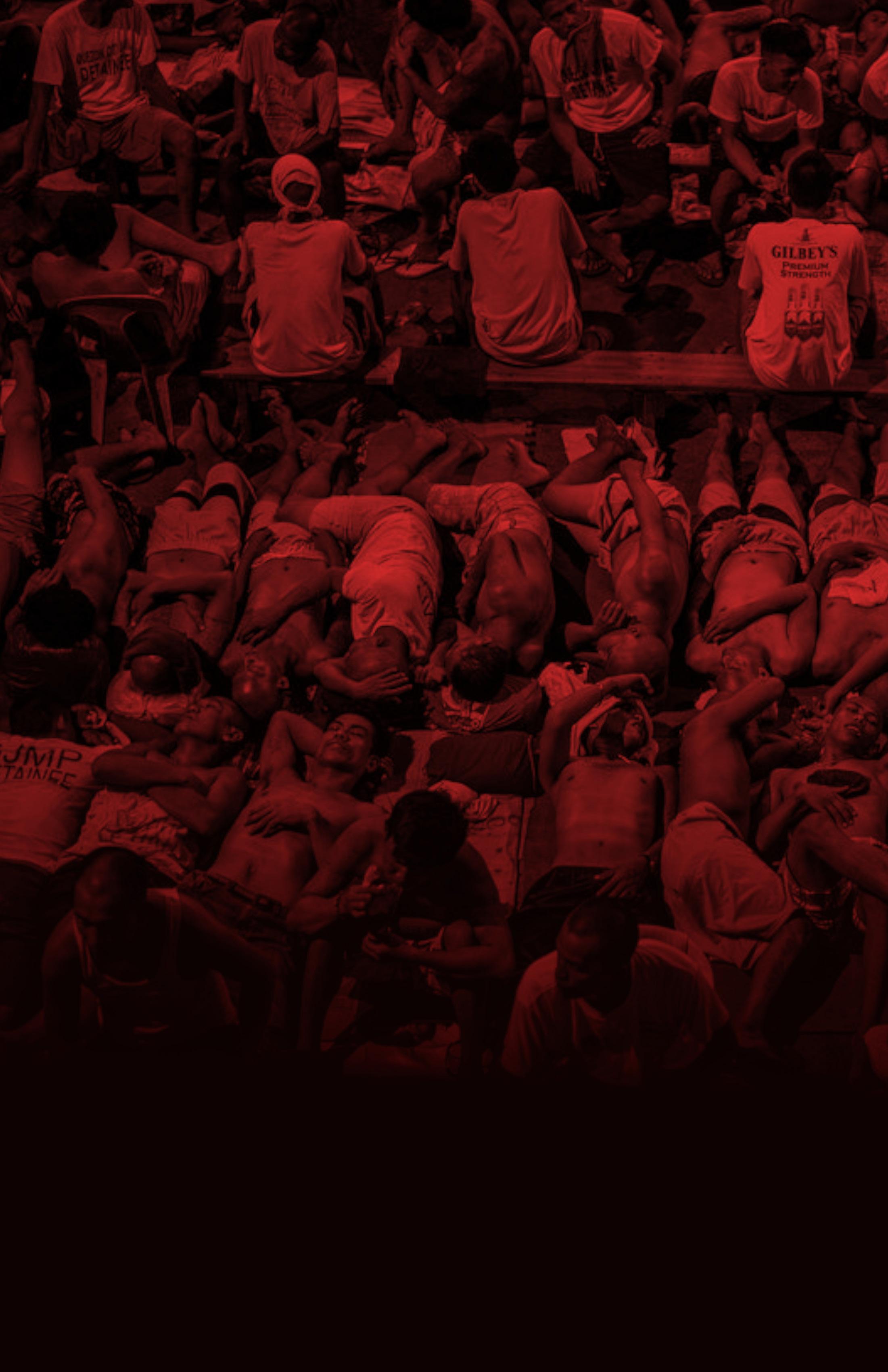
ABANDONED GUESTS OF THE STATE
Our society consists of several vulnerable groups: women, youth, farmers, workers, and the poor to name some. They are considered at risk due to exploitation and discrimination committed by the elite. Among these groups, there is one that is less discussed.
By Giancarlo Morrondoz
Of the 215,000 inmates mentioned earlier, an overwhelming percentage of 75.1% of the whole prison population are considered as pre-trial detainees. These are prisoners who are remanded or detained during criminal investigations and are set for eventual trial. In 2013, Frank* was arrested for the murder of a policeman, a charge he fervently denied. While he was being interrogated at the police station, he was severely beaten and tortured by ten cops who kept accusing him of the said murder. Ironically, the charges filed by the police was not of homicide or murder but that of illegal trafficking of drugs and firearms, charges that typically have instances of planted evidence.
Remand prisoners could be kept in a cell for months or even years and some are coerced to admit to their charges even without substantial evidence. Torture and violence on pre-trial detainees are also common, stripping them of their right to a fair trial.
Many detainees usually cannot afford to hire lawyers, and in many cases, there is not even a nearby and available judge for their trials. These people are defenseless and left with barely any alternatives. Pre-trial detainees wait an average of nine months before they are granted a trial. Prison cells are made to house convicts and are supposed to be temporary residences for pre-trial detainees, but many of these detainees stay for months, if not, years, due to intensified bureaucracy in our justice system.
In most countries, pre-trial detainees only constitute a minority of the prison population. It is considered as a last resort reserved only for exceptional cases, like those who are likely to escape or to commit more crimes if not hastily detained. The Philippines, along with many other developing countries such as Brazil, Thailand, and India, have a high percentage of pre-trial detainees between inmates.
The UN set countermeasures that should be implemented to lessen pre-trial detainment. Measures including, but not limited to, prompt information about the arrest, trial without delay, separation of pre-trial detainees and juveniles from convicted prisoners. These are all measures that the Philippines and many other developing countries have not yet applied or are ineffective at doing so. Laws like the Speedy Trial Act were enacted in 1998 to reduce pre-trial detainees and the prison population, yet its percentage only continues to rise.
The slow processing of trials and the large percentage of prisoners primarily composed of pre-trial detainees are all symptoms of a flawed justice system, one that does not ensure genuine justice and equality. It does not ensure the fairness of law for women, many of whom are already facing an uphill battle at court due to a history of discriminatory laws found in our Labor Code and Revised Penal Code. Sexual abuse in jails is also widespread, despite the introduction of laws which safeguard prisoners inside detention centers, such as the Prison Rape Elimination Act.
In 2018, the Supreme Court (SC) reported that courts in the Philippines resolved more cases than what they initially aimed for. The SC disposed of nearly 50% more cases above its target. Although courts were comparatively more productive, why are there still over 160,000 detainees who are not yet granted their trial?
This is due to a huge backlog of cases, some of which are already a decade old; the problem lies in the inconsistency of the judicial courts from term to term. In 2016, during the first year of Duterte’s presidency, there was a sharp increase in backlog cases, likely due to upheavals in courts and the administration’s newly-executed war on drugs. The inefficiency of our courts is only augmented by poor administrative policies and its innate bureaucracy, but the broken and disorganized system already existed years ago.
The police are usually under pressure to produce results. This is due to incentives set by the Duterte administration for the arrests, murder and execution of criminals, regardless of conviction. The investigative process is also jeopardized leading to errors and the arrest of individuals, many of which are people who are below the poverty line and uninformed in the judicial process. Some are arrested using extorted confessions with the promise of financial assistance and a swift release.
After these prisoners serve their time, rehabilitated, and once again a free citizen, discrimination against them does not stop there. Their history as an “ex-convict” hangs on to them even after their release. There were cases of ex-convicts receiving less pay despite working decently. Back in 2019, prisoners who were released early on good behavior were intimidated to turn themselves back in due to an ultimatum issued by Duterte, with those who do not cooperate to be arrested. Despite prisoners’ efforts, reform is actively discouraged and considered to be impossible.
Duterte’s infamous willingness to breach existing laws also undermines an already impotent justice system. His war on drugs alone has produced tens of thousands of victims, many of which are undocumented.
The poverty-stricken residents of Sitio San Roque requesting for financial aid, amidst the pandemic, were violently arrested and fined for allegedly breaching quarantine protocols. Meanwhile, police officers who held a mass gathering for a birthday party are slapped on the wrist. Senator Koko Pimentel endangered many patients in the Makati Medical Center, by breaking the same laws, but he was able to walk away without any repercussions.
Noli*, an old fishmonger, was violently arrested, fined, humiliated, and detained for four days for not wearing a face mask while he was trying to earn a living to feed his family. His wife was forced to borrow P2,000 from a “5-6 lender” in order to pay the police in exchange for Noli’s freedom.
Even after conviction, biases and special treatments for affluent and powerful prisoners still pervade. Zaldy Ampatuan was convicted for 57 counts of murder for the Maguindanao Massacre, but was allowed a furlough back in 2018 to attend his daughter’s wedding. Ina Nasino was only given three hours to attend her six month-old baby’s funeral. 43 armed guards even guarded her throughout her furlough. The difference between the two cases is that the latter is seen as a political prisoner, or individuals who are imprisoned due to their opposing political beliefs. Political prisoners are continuously denied these rights, even in life or death situations.
Marcos Aggalao, 74-year-old peace pact holder of the Salegseg tribe was refused to be released, despite suffering dementia and pneumonia. He died on September 17, 2017 and suffered three strokes while incarcerated. Meanwhile, Atty. Gigi Reyes, detained for being linked to the pork barrel scam and other plunder charges, was temporarily released by courts to have a dental appointment back in 2015.
Former Calauan Mayor Antonio Sanchez has a sizeable room with amenities and could even continue his criminal operations despite the heinous crimes of rape and murder he committed to two students from the University of the Philippines Los Baños (UPLB) back in the 1990s. He was slated to be released this 2020 because former BuCor chief Nicanor Faeldon asserted that Sanchez was covered by the guidelines set under RA No. 10592 or the Good Conduct Time Allowance (GCTA) law.
Our judiciary system is said to be focused on retribution rather than reform. However, while this is true for the impoverished, time in prison for the wealthy is treated as a chance for redemption and rehabilitation. For the marginalized, it serves as retribution for being cemented in poverty, defenseless.
With the ongoing clamor for the reinstatement of the death penalty as a retributive measure, the need for reform in our judicial and penal system is apparent. Because when our laws are built perfectly in favor of the privileged, the masses are left to suffer.
It is well within our rights to demand accountability from the government as well as an efficient and fair judicial process because the deteriorating rights of prisoners is a reflection of a corrupt and faulty system. Especially with the enacted Anti-Terrorism Law, along with its vague provisions, anyone is at risk of imprisonment.
The law should be able to defend the disadvantaged, help the helpless, and safeguard the vulnerable. Because without justice, genuine democratic freedom and peace cannot be obtained.
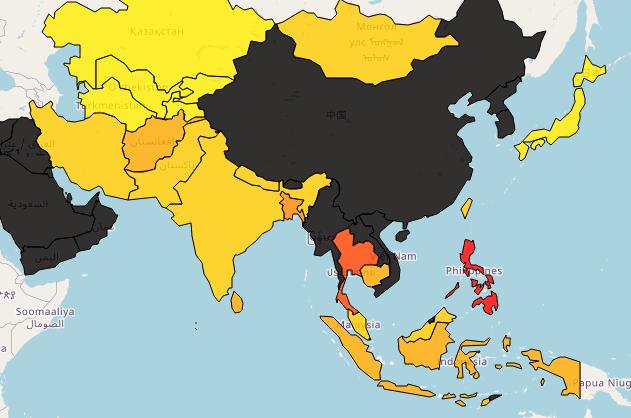
WORSENING CONDITIONS FOR FILIPINO PRISONERS
Even the pandemic couldn’t stop the continued neglect for prisoners, with their dire situation being exacerbated since 2016 by the decline in the rule of law brought by the Duterte regime.
Congested to the brim
The Philippines has the worst occupancy rates for prisoners in Asia, at 463%.
Low High No data
350,000
300,000
250,000
200,000
150,000
100,000
50,000
Getting unfair as time goes on
Since the Duterte administration started in 2016, the number of detained prisoners yet to be put into trial has increased.
Total prisoners Pre-detained ones Pres. Duterte takes office
Pres. Arroyo elected in ‘04 Pres. Aquino elected in ‘10
0
2002 2006 2010 2014 2018 Fast facts
THE TOLL OF NEGLECT
75.1%
of all prisoners in the country have yet to go into trial for their charges (See left)
5,200
inmates die annually due to factors exacerbated by squalid jail conditions
SOURCE WORLD PRISON BRIEF RESEARCH & INFOGRAPHIC DESIGN IAN RAPHAEL LOPEZ MONEY TALKS IN PRISON
P17k
How much the government will spend for a single prisoner’s needs for a whole year
13%
drop in Bureau of Corrections’ budget, from P4.4 billion to P3.7 billion
UNDER OUR CURRENT STATE OF AFFAIRS, ACTIVISM AND OPPOSITION IS CONSIDERED A CRIME, THE DISFAVORED ARE EITHER OPPRESSED OR SILENCED USING OUR VERY OWN CONSTITUTION.
ONLINE
With a little more than a year left in office, the Duterte administration is keen on cementing BBB as its ultimate legacy. But at what cost?
By Aron Sierva
Definitely, the airport city project is a part of the government’s Destruct-Destruct-Destruct scheme that primarily caters to business interests and conveniently leaves out genuine development prospects for the people,” Bagong Alyansang Makabayan (BAYAN) Bulacan had this to say regarding the New Manila International Airport (NMIA).
As claimed by San Miguel Corporation (SMC), which was awarded the franchise to construct the P738 billion project, the airport would apparently contribute to the improvement of Philippine transportation, while bringing “unprecedented level of growth” to Bulacan.
But because the said airport will be constructed along the coastal areas of Bulacan, fisherfolk fear losing their livelihood, brought by displacement and the environmentally-damaging construction. Pambansang Lakas ng Kilusang Mamalakaya ng Pilipinas (PAMALAKAYA) - Bulacan expressed their worries and disappointment, saying that development must not come at the expense of their lives.
The problem brought by harmful infrastructure development, however, is not exclusive to Bulacan, as it extends to the whole country. The NMIA only constitutes the tip of the iceberg under the Duterte administration’s flagship infrastructure project, the Build! Build! Build! (BBB) Program.
As soon as he assumed the presidency, Duterte promised a better economy for the Philippines. Bannering BBB as his centerpiece project economic-wise, Duterte aims for this initiative to “usher the golden age of infrastructure in the Philippines.” In this project, 52.1% are railways, 27.3% are bridges and roads, 8% are airports, 5.2% are mass transit, and 1.6% are seaports.
Approved last June 4, House Bill No. 6815, also known as Accelerated Recovery and Investments Stimulus for the Economy of the Philippines (ARISE Philippines), is a P1.3 trillion package that is to be utilized to restore the country’s economy that was severely affected by the pandemic. Ironically, the bill centers the country’s funds on infrastructure programs.
With a little more than a year left in office, the Duterte administration is keen on cementing BBB as its ultimate legacy, so much that the lion’s share of the funds meant for the pandemic response is to be spent on infrastructure projects, setting apart P650 billion for the said program.
Fair enough, part of the general description of the infrastructure programs include the construction of modern health facilities and public school clinics. However, this has yet to be given a detailed breakdown, and the health sector seems to be excluded from the said bill. Contrary to their “plans”, there haven’t been major constructions of hospitals and health facilities to aid in the suppression of the virus.
In truth, the percentage of health budget prioritization has declined in the past years. According to IBON Foundation, a development and research organization, the health sector budget’s overall share in the national budget has fallen from 4.9% in 2019 to 4.5% in 2020.
Moreover, numerous minimum wage earners and informal sector workers fail to receive medical attention, brought by costly health services, and unavailability of health facilities in remote areas. Health workers themselves are even calling out for more reasonable assistance, saying that the low COVID-19 Special Risk Allowance (SRA) and Actual Hazard Duty Pay (AHDP) are adding “insult to the dignity” of frontliners risking their lives amidst a health crisis. It should be worth noting that while the government is busy finding a solution to “solve” the ongoing recession, its citizens, who themselves must be the primary beneficiaries to economic growth, are suffering, if not dying, from a substandard yet costly healthcare system.
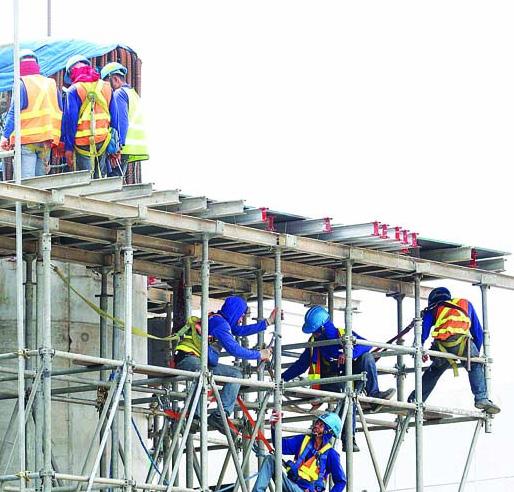
Two years into Duterte’s administration, the country’s real gross domestic product (GDP) had registered a total increase of 11.3%. At first glance, it seems to prove the government’s claim of a growing economy through its flagship projects. Looking deeper, however, we find that in NCR alone, this economic growth was actually driven not by government programs, but by rising labor productivity. As presented by IBON, productivity increased by 12.7% in two years.
To put it in a different perspective, the economic growth that the country enjoyed at the time being is attributed to Filipino workers, who are still deprived of justifiable wages to answer their most basic needs. Despite the labor situation being worsened by the pandemic, the government is still convinced that raising our economy would best be done through furthering infrastructure spending. However, as Gabe Alpert wrote for Investopedia, “Construction spending tends to peak years after a project is started. In this case, the large multiplier effect associated with this kind of spending can be counterproductive, exaggerating rather than smoothing out economic cycles.” After a recession, spending must be quick in order to multiply its effect. Therefore, funds should be directed towards financial distribution among low-income households, who are expected to spend eagerly for their basic needs after they have been financially challenged by the pandemic.
Infrastructure projects increase deficit spending, leading to unsustainable government debt. As a matter of fact, data from the Bureau of Treasury (BOT) show that as of August 2020, the Philippines’ outstanding debt amounted to P9.615 trillion. Because of the pandemic, the government expects a debt-to-GDP ratio of 54%, which indicates the decreasing ability of our country to pay off our debts. Needless to say, the money that will be used to pay off such amounts comes in the form of taxes, which further burden the masses. It comes with anti-poor laws such as the Tax Reform for Acceleration and Inclusion Law (TRAIN) Law, which increases the prices of basic goods and services, further “exacerbating” poverty and our market’s already inflated prices.
Infrastructure projects tend to attract thieves,” said Ralf Rivas, a finance correspondent from Rappler. Directly emphasizing the point, he added that infrastructure projects have been historically plagued with corruption. These statements
What Build, Build, Build truly destroys
A debt trap
Because of the enormity of the projects, about P1 trillion of funding would be sourced for official development assistance (ODAs).
Others 8.17%
ODAs 12.9%
PPPs 16.5%
Traditional mode of procurement
63.2%
SOURCE NEDA DESIGN IAN RAPHAEL LOPEZ PHOTO FROM PHILIPPINE NEWS AGENCY
can be quantitatively expressed through a presentation by the Research, Education, and Institutional Development Foundation (REID), an organization of economic solution experts.
Providing a breakdown of the average expenses of a construction firm, the organization presented a graph that showed 15% to 35% of the expenses that were allegedly spent on “other costs of doing the business” - which, according to REID Foundation, represents the budget allocated for corruption. Some contractors even complain that it is the politicians themselves who demand such “fees.”
In addition to being a tool for corruption, infrastructure programs also seem to serve as a doorway for neocolonialists, given that numerous projects are funded by foreign entities. In fact, just three years into Duterte’s term, the Philippine government has already obtained 8.47 billion dollars from external financing.
Kaliwa Dam, for instance, is funded by none other than the Republic of China. The loan agreement signed by the Metropolitan Waterworks and Sewerage System (MWSS) awarded the Export-Import Bank of China (EXIMBANK) to finance the P10.4 billion water source.
According to Atty. Maria Cristina Yambot of the National Union of People’s Lawyers (NUPL), prioritizing a Chinese bank for the dam construction violates the Filipino First Policy, comprehensively stated in Article XII, Section 10 of the 1987 Philippine Constitution.
Infrastructure funding has also eaten up the agricultural and fisheries sector’s share, which is only to be given an assistance of P66 billion, despite being severely affected by the recent pandemic. Redo Peña, a farmer from San Jose del Monte, Bulacan said, “The strict lockdown crippled us...it is difficult to survive. Many of us only have a handful of our produce.”
Filipino farmers and fishermen have been receiving little to no assistance. What they have been receiving, instead, are threats of land-grabbing and militarization, as well as other forms of harassment. Only a few months back, there were burning of fishermen’s houses in Cavite; demolition of a fisher community in Batangas and farmers’ houses in Bataan; and the recent harassment suffered by Hacienda Yulo farmers, which included demolition and arson, amidst issues of land-grabbing.
Despite these problems, lawmakers continue to prioritize infrastructure projects in our budget. It is even worsened by policies such as the Rice Tariffication Law which jeopardizes farmers’ jobs due to increased importation, while violating their rights and access to resources.
In addition to the agonies of farmers and fishermen, other marginalized families lament a high cost of living all the while a health and economic crisis. In a survey by the Social Weather Station (SWS), they found that 4.2 million Filipino families were involuntarily hungry just from the early months of the pandemic. While millions of poverty-stricken families starve, National Economic Development Authority (NEDA) Acting Secretary Karl Chua said, “There’s no point in giving subsidies if families can’t even go out and spend.”
To the government’s defense, data from the DPWH showed that BBB had generated 4 million jobs from 2016 to 2019. However, behind what is seemingly an excellent improvement in the labor sector is the persisting exploitation of companies on their employees, a situation worsened by the government’s minimal interference to raise the socioeconomic state of workers. The National Capital Region’s (NCR) nominal minimum wage remains at only P537, while other regions suffer lower rates like in Southern Tagalog, which is valued at P373 despite today’s living conditions. Besides the state’s neglect, BBB is
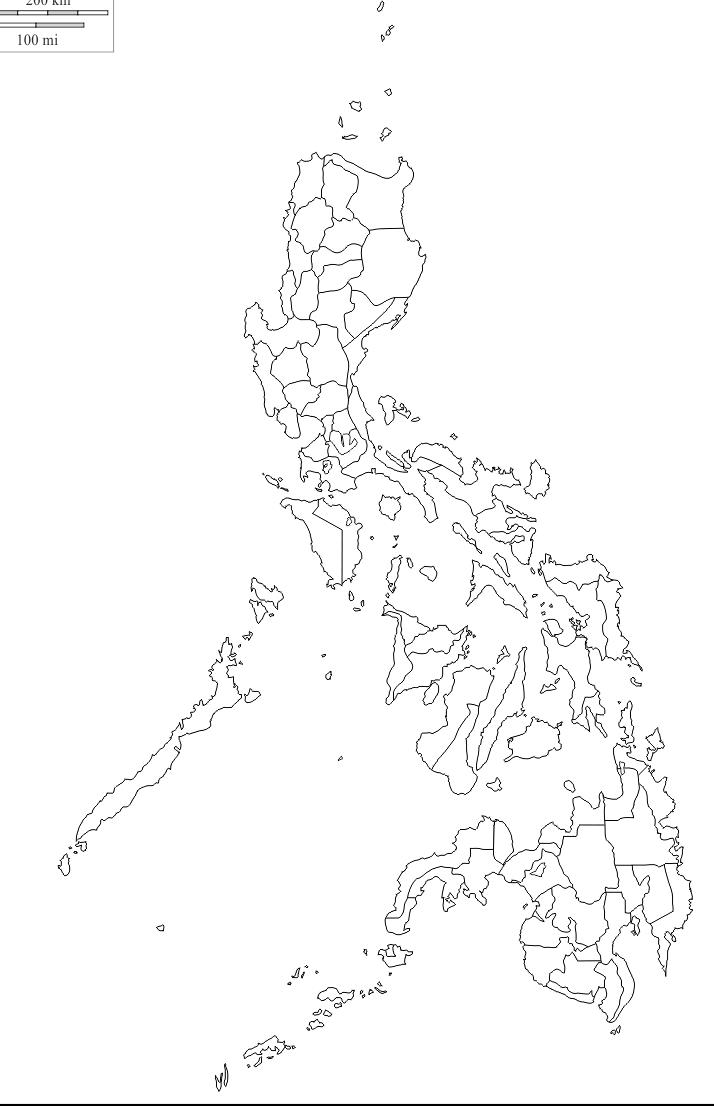
Duterte’s infra bonanza: Is it still worth it?
One of the purported legacies of the current regime is its “Build! Build! Build!” project. It was designed to be ambitious in scope, but reality bites and the pandemic happened. Is it still what the country needs after reeling from the government’s mishandling of the crisis?
Map of projects
Rail & urban transport
Bus rapid transport
Air transport
Road transport
Major ports
Irrigation Water
Flood management
P2.3t
Nationwide investment target by NEDA in BBB, 2017-22
P12.2b
Cost of New Centennial Water Project or Kaliwa Dam
Sector breakdown of infra targets
According to NEDA’s projections, transport projects under the BBB has the lion’s share of investments.
Others 6%
NCR projects
P965b
Cost of Build, Build, Build projects in the National Capital Region alone
Water resources
12%
Social infra 13%
Transport 64.2%
P574b
Projected BBB project cost in Visayas and Mindanao
The infrastructure myth
Duterte’s talking heads have often trumpeted how infrastructure projects will push the country’s economy into greater heights. But a study from IBON Foundation shows otherwise.
GDP growth and labor productivity growth, 2010-2020 (%)
GDP Labor productivity
10
8
6
4
Pres. Aquino takes office Pres. Duterte takes office 2020
Worst since 1945, with -9.5%
GDP growth -3.6%
labor productivity growth
2
0
2010 2011 2012 2013 2014 2015 2016 2017 2018 2019 2020
-2
-4
-6
-8
Domestic general gov’t expenditure in ASEAN, as % of GDP (2018)
Thailand Thailand Vietnam Vietnam BruneiBrunei Singapore Singapore Malaysia Malaysia Philippines Philippines Indonesia Indonesia Cambodia Cambodia LaosLaos Myanmar Myanmar
0.87% 0.71%
1.44% 1.42% 1.28%
2.30% 2.25%
1.92%
2.89% The pandemic 2.70% has shown how the country’s underfunded health system lagged behind our ASEAN neighbors, because we spend more on 0% 0.5% 1%0.00% 0.50% 1.00% 1.5% 2% 2.5% 3%1.50% 2.00% 2.50% 3.00% infrastructure. 2018-19 +12%
IBON says that this growth in labor productivity fueled the economy, resulting in +8.2%
GDP growth in the time period. also infamous for degrading the environment and threatening numerous Filipino residents of displacement. A testament to this notoriety is the Kaliwa Dam, construction of which was established in order to “meet the increasing water demand of residents”.
What was overlooked, however, are the detrimental consequences of the dam’s construction on both the residents and on the environment. According to Advocates of Science and Technology for the People (AGHAM), building Kaliwa Dam would lead to deforestation, biodiversity loss, loss of food source, decreased rainfall, flooding, and landslides. Moreover, it would displace the indigenous Dumagat and Remontado tribes, which rely heavily on the mountainous regions for their livelihood and survival.
According to the Forest Management Bureau, forest-covered areas have fallen to only 23% of the Philippines’ total land area, which is considered an “environmentally-critical level.” On the other hand, as per the Bureau of Soil and Water Management, 71% of the country’s land area is severely degraded. This environmental damage, as pointed out by IBON Foundation, is mainly caused by governmental infrastructure projects such as BBB.
There are at least 100 projects under the BBB Program, bannering Duterte’s supposed dream of economic development. Indeed, BBB may have built, built, built, but infrastructures are not the primary basis for development. Antithetical to its objective, BBB has been a tool of destruction.
It damages the environment, replacing forestlands with high-rise buildings; and it aggravates the living conditions of the marginalized. The BBB program demolishes long-protected cultures, displacing indigenous people from their ancestral lands that are now reclaimed for “economic purposes.” It impedes genuine national development as it gives priority to foreign companies and investors.
With 22 million Filipinos struggling in poverty, it is worth asking who would really benefit from high-end airports, highways, bridges, railroads, and buildings. Considering the agricultural nature and archipelagic structure of the Philippines, the government should extend assistance to farmers and fisherfolk, instead of converting our natural resources to infrastructures. Supporting the agricultural and fisheries sector would not only strengthen the sector’s profits, but would also guarantee our country’s food supply and sovereignty, consequently decreasing our dependence on global markets and our need to excessively import.
If the Philippine government is earnestly keen on pushing for economic development, then it must be development anchored on the calls, advocacies, and needs of the masses: one that does not merely serve bureaucrat capitalists, oligarchs, or the comprador bourgeoisie. As Lodema Doroteo, a Dumagat teacher, stated, “Hindi kami against sa kaunlaran, pero dapat ang gagawing pagbabago ay ‘di rin makakaapekto [nang masama] sa karamihan.” For every airport and dam, countless families are forcibly displaced from their homes. For every road construction, our forests and natural resources continue to deteriorate. And while the BBB program builds for the future, it destroys the lives of millions of Filipinos today.
ONLINE
Nagsimula ang administrasyong Camacho noong Nobyembre 1, 2020, matapos siyang ihalal ng Board of Regents (BOR) sa kanilang ika-1354 na pagpupulong na ginanap noong ika-24 ng Setyembre, 2020. Si Camacho ang humalili kay dating Tsanselor Fernando C. Sanchez, Jr, isa rin sa kaniyang mga naging katunggali upang makuha ang nasabing posisyon. Matapos ang 100 na araw sa kanyang pag-upo sa pwesto, ano na nga ba ang estado ng ating unibersidad?
Bago pa man magsimula ang termino ni Chancellor Camacho, kinakaharap na ng unibersidad ang matinding isyu ukol sa daandaang nakabinbin na kaso ng Maximum Residency Rule (MRR) at readmission. Matagal nang idinadaing ng mga estudyante ang burukrasya na sinasabing lalong pinaigting ng mga anti-mag aaral na polisiyang ipinatupad noong pamamalakad ni Sanchez.
Mula sa diyalogong dinaluhan ni Chancellor Camacho at ni Vice Chancellor for Student Affairs (VCSA) Dr. Janette Malata-Silva, kasama ang University Student Council (USC) noong Oktubre 16, 2020, nakapaglatag sila ng mga plano upang maresolba ang matagal nang patong-patong na mga kaso ng MRR at readmission. Ipinaalam din ni VCSA Malata-Silva, sa nasabing usapan, ang kanilang mga ginagawang hakbang, kasama si Vice Chancellor for Academic Affairs (VCAA) Jean Loyola upang suriin ang mga kasong ito.
Mula sa pahayag ni Chancellor Camacho sa [P] Live noong Oktubre 3, 2020, ipinaliwanag niya na kailangan pa nilang mangalap ng impormasyon patungkol sa mga estudyante tulad ng: kung sinu-sino ang mga estudyanteng may kaso ng MRR at readmission, kung saan sila nagmula, anong kurso ang kanilang kinukuha, at mga kondisyon na nakapaloob sa kanilang mga kaso.
Ipinahayag ng tsanselor na gagawin nila ito sa pamamagitan ng kanilang pakikipagtulungan sa mga pinuno ng sangkaestudyantehan. Nangako rin siya na sa oras na maupo na siya sa opisina, tatagal lamang ng dalawa o tatlong linggo ang pagresolba sa mga kasong ito; sa ngayon ay may usap-usapan na mayroon nang inaprubahang mga kaso ng MRR at readmission ngunit wala pang nailalabas na pormal na anunsyo ukol dito.
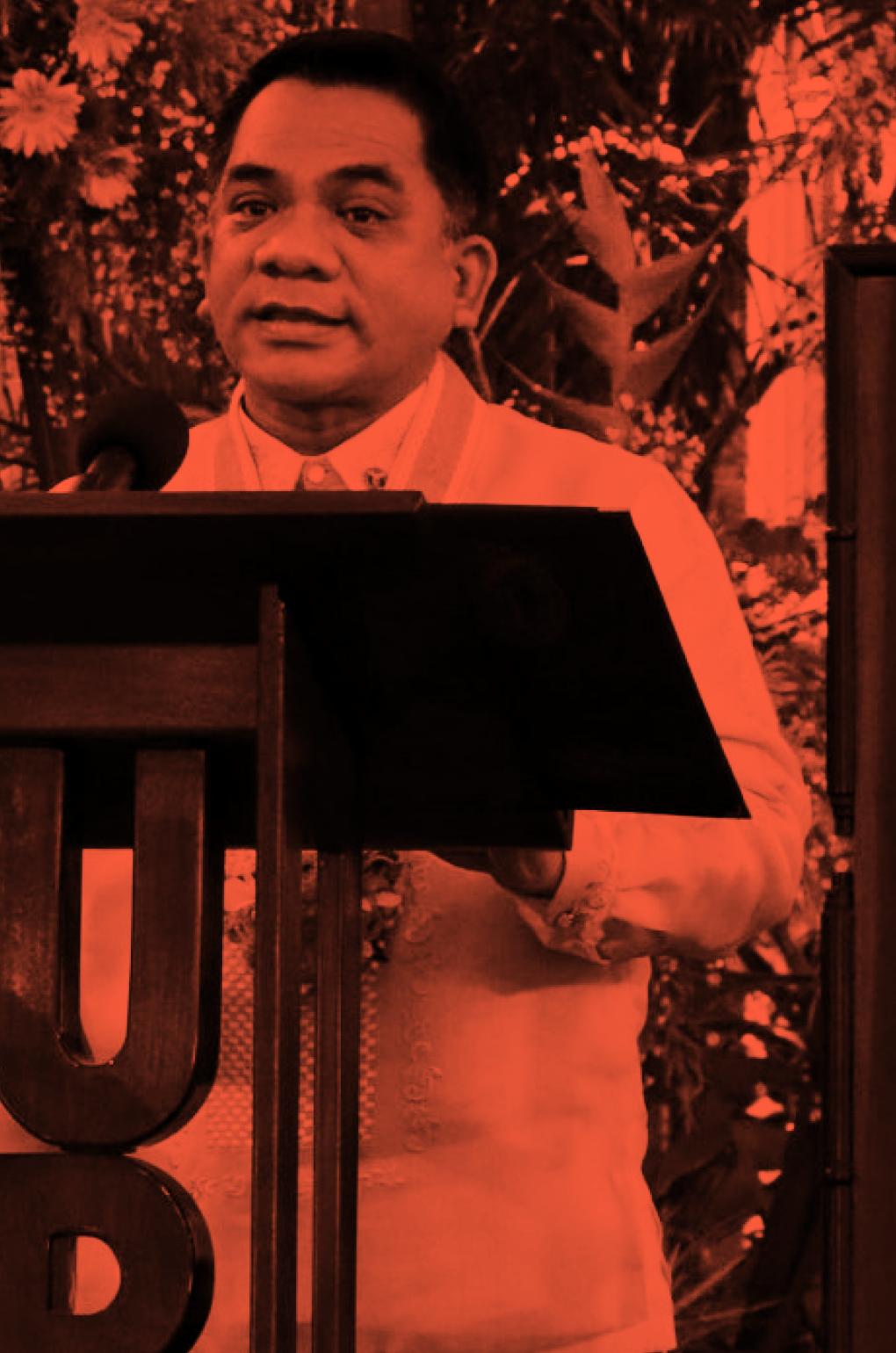
Kinaharap din ng administrasyon niya ang problema sa pagimplementa ng epektibong remote at modular learning bunsod ng pandemya na naghigpit sa pagdaraos ng klaseng pisikal. Napilitan ang unibersidad na makisabay sa online classes kahit hindi pa man handa ang kalakhan ng mga estudyante, guro at kawani.
Sa nagdaang semestre, naglabas si Camacho ng ilang mga memorandum at administrative order ukol sa isinasagawang remote learning. Naglunsad rin ng mga konsultasyon upang pakinggan ang suliranin at hinaing ng mga nasasakupan.
Isa sa mga palibot-liham na inilabas ni Chancellor Camacho ay ang Memorandum No. 161 noong Nobyembre 13, 2020 upang sumunod sa inilabas na memorandum ng Office of the Vice President for Academic Affairs (OVPAA). Ito ay ang “Clarification on Suspended Academic Rule and Processes in the First Semester AY 2020-2021,” na naglalaman ng (1) suspensyon ng deadline para sa Leave of Absence (LOA) at course dropping hanggang ika-9 ng Disyembre, (2) ang pagtanggap ng 12-unit course load bilang regular load, (3) ang hindi pagbilang sa naturang semestre sa MRR, at (4) ang hindi pagbilang sa attendance
NOVEMBER 11, 2020 Initiated the UPLB Connectivity Assistance for Remote Students program which provides learning support systems and assistance to UPLB students transitioning to remote learning
NOVEMBER 26, 2020 UPLB launched Agapay, UPLB’s disaster response task force, a platform for coordinating response on calamities
NOVEMBER 19, 2020 On difficulties in remote learning
DECEMBER 2, 2020 Camacho condemns killing of former Elbi mayor Caesar Perez
BALIKTANAW SA 100 ARAW
Isang malaking hamon para kay Chancellor Camacho ang pagsisimula ng kanyang termino sa gitna ng banta at panganib na dulot ng pandemya. Patuloy pa rin ang hamon na unahin ang interes ng kaniyang mga nasasakupan, at tumindig sa lumalalang abuso’t pananamantala sa karapatang pantao at pang-akademikong kalayaan.
Ni Emerson Espejo
JANUARY 19, 2021 On UP-DND Accord issue
JANUARY 28, 2021 “We took a proactive stance to uphold the academic freedom of the university, and ensure the safety and security of our constituents and our surrounding communities,” Camacho said in his meeting with the Laguna police after the abrogation of the UP-DND Accord.
bilang course requirement. Bunsod ng mga nagdaang kalamidad ay mas tumindi pa ang hamon para sa mga estudyante upang makasabay sa virtual learning. Nagkaroon ng diyalogo noong Disyembre 2, 2020 sa pagitan ni Chancellor Camacho at ng USC upang ilatag ang mga naging hirap at balakid sa nagdaang semestre, rehistrasyon sa klase, at plano para sa susunod na semestre.
Tiniyak naman ni Chancellor Camacho na suportado ng administrasyon ng UPLB ang mga apila para sa mas flexible na pag-aaral sa kabila ng mga suliranin na nailatag sa pag-uusap. Ngunit sinabi rin niya na hindi ganoon kadali gumawa ng desisyon para sa unibersidad dahil ito ay bahagi ng UP system at ito’y nasa ilalim ng mga resolusyon na binubuo ng nakatataas na administrasyon ng UP.
Sa gitna ng kaliwa’t kanan na panawagan ng mga estudyante upang ihinto ang nakaraang semestre dahil sa naging matinding pinsala nito hindi lamang sa pisikal na kalusugan pati na rin sa kalusugang pangkaisipan, nagpatuloy pa rin ang semestre. Sa kabila ng malawakang strike na ikinasa bilang pakikiisa sa mga mag-aaral na wala ng kapasidad upang magpatuloy pa sa pag-aaral, binigo pa ring pakinggan ng BOR ang hiling ng mga estudyante. Matatandaan na hindi ito ang unang pagkakataon na binalewala ng BOR ang hinaing ng mga estudyante sa pamamagitan ng kanilang mga ginawang desisyon.
Manipestasyon ang mga memorandum, tulad ng pagbawas sa kinakailangan na rekisito sa mga asignatura, na sinusubukang pagaanin ng administrasyong Camacho, sa abot ng kanilang makakaya, ang mga paghihirap na nararanasan ng kanilang mga nasasakupan. Gayunpaman hindi pa ito sapat upang maresolba ang mga problema katulad ng kawalan ng access sa internet ng ilang mga mag-aaral at ang mga problemang kaugnay ng remote learning na nangangailangan nang agarang solusyon lalo’t hindi pa tiyak kung kailan babalik sa dati ang lahat.

Hindi lang mga isyung pangkampus ang hinarap ng UPLB, nariyan din ang tangka ng opresyon mula sa mga puwersa sa labas ng unibersidad. Nagulantang hindi lamang ang buong komunidad ng UP, pati rin ang mga estudyante mula sa ibang pamantasan, matapos ipawalang bisa ng Department of National Defense (DND) ang UP-DND Accord nitong Enero 18.
Ang nasabing kasunduan ang nagbabawal sa pagpasok ng militar at kapulisan sa loob ng mga UP kampus ng walang pahintulot mula sa mga opisyal ng unibersidad. Nauna nang ipinaalam ni Defense Secretary Delfin Lorenzana ang pagpapawalang bisa sa kasunduan noong ika-15 ng Enero sa pamamagitan ng ipinadalang liham kay UP President Danilo Concepcion.
Kaugnay nito ay naglabas ng pahayag si Camacho noong Enero 19, na nagsasaad ng kanyang pagkadismaya sa pagpapawalang bisa sa kasunduan at tila ito’y isang “pagatake sa kalayaan ng UP bilang isang institusyon.”
Kasama rin sa kanyang pahayag ang pakikiisa niya sa komunidad sa pagkondena sa hakbang na isinagawa ng DND, “We will not back down. We will continue with our duty to defend the freedom of our people guaranteed under the Constitution – the right to life and liberty, the freedom of speech, of expression and the right of the people to campaign against graft and corruption.”
Pinabulaanan naman ni Chancellor Camacho na nagkaroon ng kasunduan sa pagitan ng UPLB at Laguna Police matapos kumalat ang isang Facebook post ng Philippine National Police (PNP) nitong Enero 29, na nagsasaad ng pagsang-ayon ng magkabilang panig para sa “paglulunsad ng mas pinagtibay na kooperasyon at pang-unawa sa kapayapaan at ordenansa, at seguridad sa loob ng unibersidad.”
Ito ay matapos bumisita si Camacho kasama ang iba pang mga opisyal ng UPLB sa Laguna Police Provincial Office (LPPO) para pag-usapan ang seguridad sa kampus sa kabila ng pagwawakas sa UP-DND Accord. Binigyang-diin ng kasulukuyang administrasyon na ang kanilang pagbisita ay upang igiit ang tindig ng unibersidad sa pagtataguyod ng UP-DND accord sa kabila ng ipinahayag na pagwawalang-bisa nito ng DND.
Mayroon pang halos tatlong taon si Chancellor Camacho upang pamunuan ang pamantasan; bagamat hindi pa masusukat sa nagdaang mahigit tatlong buwan ang kahihinatnan ng administrasyong Camacho, marami pa siyang maaaring patunayan bilang tsanselor ng UPLB.
Marapat mang banggitin na sinasabing naging makabuluhan ang kanyang mga naging unang hakbang para sa komunidad, nariyan pa rin ang hamon na patuloy na unahin ang interes ng kaniyang mga nasasakupan at tumindig sa lumalalang abuso’t pananamantala sa karapatang pantao at pang-akademikong kalayaan. Sa unang ika-100 na araw ni Camacho bilang tsanselor ng UPLB, patuloy nating singilin at kalampagin ang “future-proof” na unibersidad na “maka-estudyante” at “makatao” na ipinangako niya sa simula ng kaniyang termino.
Aniya...
Ang ibig sabihin ng future proofing UPLB ay mapaghandaan natin ang mga paggambala – ang mga tinatawag nating disruptions, mga disturbances...
AGOSTO 26, 2020
Sa isang [P] Live interview ukol sa kaniyang plataporma
Pagka-upo natin sa November 2 ay ang ating mga maihayag sa ating mga estudyante na ang pagre-review ng MRR o readmission cases.
OKTUBRE 3, 2020
Sa isang [P] Live interview ukol sa mga MRR/read cases
Our students, especially our freshmen, may be lacking in course content and skills but definitely not in empathy and compassion.
NOBYEMBRE 19, 2020
Sa kasagsagan ng mga kalamidad na rumagasa sa Southern Tagalog
There was no agreement discussed. No talks of communism or red-tagging.
[P] GRAPHIC: JERMAINE VALERIO







